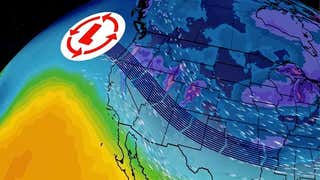

US
°C





A newly proposed draft at the United Nations (U.N.) climate talks in Lima, Peru, would have every country commit to some level of carbon emissions cuts for the first time ever at the expense of a single emission standard, the New York Times reports.
Under the new draft, each country will propose separate carbon emissions reduction commitments to be enacted post-2020 and publish those pledges by June 2015 at the latest, Reuters notes.
That would mean there would be 196 separate emissions pledges, one for each country, to be voted and agreed upon to form a new global climate agreement at the U.N. Climate Change Conference in Paris in November 2015.
“It’s a breakthrough, because it gives meaning to the idea that every country will make cuts,” Yvo de Boer, the former executive secretary of the United Nations Convention on Climate Change, told the New York Times.
“But the great hopes for the process are also gone.”
(MORE: Why the U.N. Climate Talks Matter)
The proposed draft would mean an abandonment of a unanimous international carbon emissions standard scientists believe is needed to help curb global temperature rise. Scientists believe that drastic carbon emissions cuts are necessary to keep global temperature rise below 2 degrees Celsius (3.6 degrees Fahrenheit) above preindustrial levels by 2100.
If global warming exceeds that 2 degree threshold, scientists from the Intergovernmental Panel on Climate Change (IPCC) say the world will experience the "dangerous" and costly impacts from climate change, like extreme heat waves, drought and sea level rise.
As Weather Underground's Dr. Jeff Masters notes, if no agreement is reached, global warming is forecast to increase by 4 degrees Celsius by 2100. The New York Times reports that the current proposed draft would only cut emissions enough to limit global warming by half as much as necessary to reach the 2-degree mark.
(MORE: Bad News For Guacamole Lovers)
Even if countries were to agree to a unanimous threshold, humans would still expend their carbon budget -- the total amount of carbon emissions allowed to limit global warming to the 2-degree mark -- by the 2040s. That means this new proposed draft will expend that budget much quicker, well before the 2040's.
Regardless, if leaders move forward with the new draft, they'll use the final three days in Lima to iron out the details on just what sort of language and standards, if any, countries will have to include in their public pledges come June 2015.
MORE ON WEATHER.COM: Alaska's Disappearing Glaciers
In the photo above, the west shoreline of Muir Inlet in Alaska's Glacier Bay National Park & Preserve is shown as it appeared in 1895. Notice the lack of vegetation on the slopes of the mountains, and the glacier that stands more than 300 feet high. See the glacier as it looked in 2005 on the next page. (USGS/Bruce Molnia)












